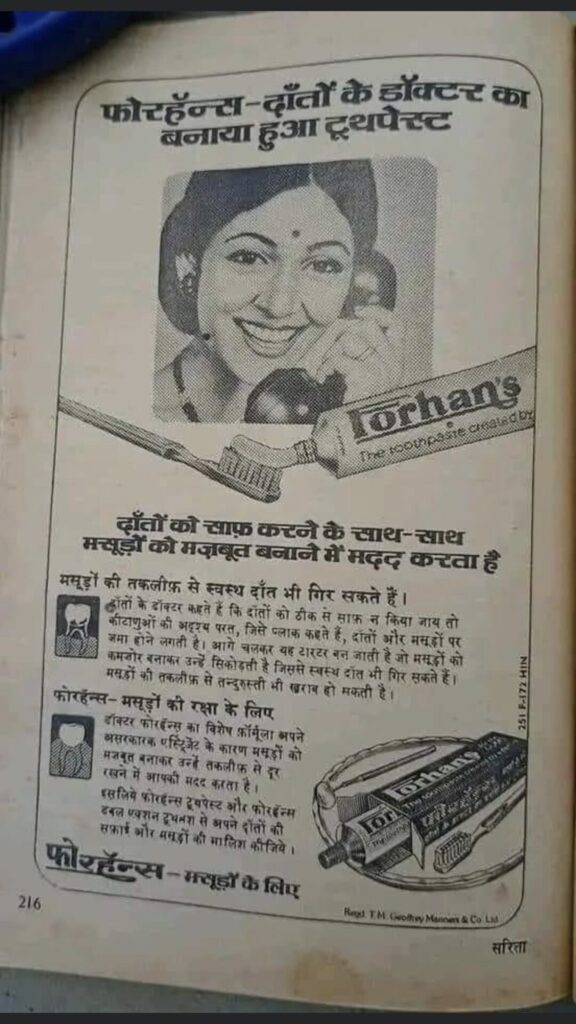Forgotten Brands – Forhans

Brands like Forhans have fallen by the wayside due to various reasons – namely not changing with times among others.
Origin
After finishing dental school in Denver, Richard Joseph Forhan (1866-1965) worked as a dentist in the city for 18 years. In 1913, Forhan established his own dentifrice factory in New York.
Forhan “invented” modern toothpaste, and his firm was sold in one of the most successful private company transactions of the 1920s. It is said that he was the first to mass-produce and sell the product as the tube of paste we are familiar with today.
India
Forhan’s, one of India’s oldest toothpaste brands, had widespread popularity in the 1960s, 1970s, and 1980s due to its lack of foam and unusual flavour (not sweet).
The unique positioning of Forhan’s resonated with Indian customers. Back then, it was revolutionary to market toothpaste as something that dentists had created, and it worked. This was the deciding factor since several households already utilized Forhans in this way. Because dentists developed it, it had to be superior.
For the first time, fluoride, which helps prevent cavities and maintain teeth enamel, was included in an Indian toothpaste. This is what made it taste a little bit bitter.
The brand was subsequently launched with an improved “foaming toothpaste” by the firm.
Celebrity Endorsements
The legendary Indian filmmaker Shyam Benegal worked with the advertising firm ASP in the 1960s to promote the product. His advertising creativity was the only reason the bitter-tasting brand was able to outlast industry giant Colgate.
Advertising that highlighted the product’s positive effects on gum health rather than only teeth was very successful.
Before she became a movie star, Benegal cast Deepti Naval in commercials.
Ads showing cricket legend Sunil Gavaskar and his then-10-year-old son Rohan were very successful for Forhan’s back in 1986.





Changed Ownership Multiple Times
In the 1960s, Geoffrey Manners began manufacturing Forhan’s.
Parallel to the rise of Colgate, Pepsodent, and Macleans in the early 1970s was the rise of Binaca. Binaca Geetmala and a collection of miniature animal figurines, was a huge hit with children everywhere.
To expand into the OTC market, prescription drug manufacturer Wyeth of the United States merged with generic drug maker Geoffrey Manners in 2002.
With its diverse pharmaceutical portfolio, Forhan’s did not fit within Wyeth’s primary commercial objectives, the company concluded subsequently.
By that time, consumers had stopped buying the toothpaste, and the brand had 4% of the market at best. Its little exposure in rural markets is disproportionate to its concentration in metropolitan areas.
In 2005, Wyeth sold the toothpaste brand to John Oak Remedies (JOR), an Indian chemical company.
Anchor Group, a prominent electronics company, bought Forhan’s from JOR two years later. Anchor Health & Beauty Care (AHBC), the FMCG division of Anchor, re-launched the brand, although it was met with stiff competition from market leaders Colgate and Pepsodent. The firm was unable to bring back the brand, and it now exists only in nostalgic remembrance.
To compare a brand to a human is a simile. People age. Others wither and pass away. Some brands barely hold on to life, while others become almost eternal.



